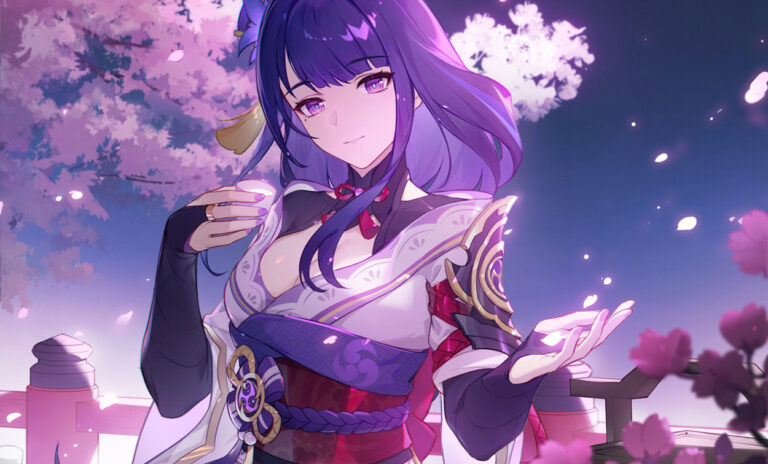Thief uses AI to steal ‘Genshin Impact’ fan art in latest copyright nightmare
Alongside crypto, NFTs, deepfakes, digital clones, and the metaverse—in all its flop era glory with a pathetic daily active user count—one of the hottest innovations guaranteed to shape our digital lives in the future is none other than AI-powered text-to-image generators.
To be honest, the technology is pretty fun to use. All you need to do is enter a random text prompt (for instance, ‘Walter White as a Starbucks barista’) and wait for a few seconds to witness your nonsensical string of words magically generate a corresponding image. Sometimes, the results are silly and hilarious—making the technology in question a handy tool for shitposters on Twitter. But majorly, the AI-powered creations are nothing less than impressive, even harbouring the potential to pass as high-quality art drawn by a legit human being. And therein lies the ethical, copyright, and dystopian nightmare.
While AI art generators like DALL·E 2, DALL·E mini (which has a track record of spewing awfully racist images, by the way), Stable Diffusion, and Midjourney have proven to be a popular pastime for casual users and tech enthusiasts alike, it has triggered an ethical landmine for artists and their livelihood.
In September 2022, a digital artwork generated using Midjourney won first place in Colorado State Fair’s annual art competition. Shortly after the announcement, the decision was met with immense backlash from participants who accused the winner of, essentially, cheating. To date, publications like The Atlantic have been spotted using AI-generated artworks at the top of their articles, a space typically reserved for photographs and illustrations taken or made by humans with proper credentials and fees.
In the same month, digital distribution platform Steam witnessed the listing of This Girl Does Not Exist, a video game that is completely generated using AI—from its story and art to even music and special effects. And don’t even get me started on the parallel timeline of AI-generated film scripts, trailers, and posters popping up on YouTube and Twitter every passing day. The technology has massive potential spanning several industries, which only exacerbates its footing as a walking pile of copyright infringement.
What makes this AI different is that it's explicitly trained on current working artists. You can see below that the AI generated image(left) even tried to recreate the artist's logo of the artist it ripped off.
— RJ Palmer 🔜 Gen Con AS37 (@arvalis) August 14, 2022
This thing wants our jobs, its actively anti-artist. pic.twitter.com/4zXDeaIUzw
Now, with the sole mission of topping this entire ethical debate, comes theft using AI image generators. Yes, you read that right. On 11 October, popular Korean anime artist AT was reportedly streaming the process of painting Raiden Shogun, a playable character in the action role-playing game Genshin Impact, in front of a live audience on Twitch.
Before they could even finish the fan art and post it to Twitter, a viewer took a screenshot of the work-in-progress, fed the same to an AI image generator called Novel AI, and “completed” it first.
Uploading the resultant creation to Twitter six hours before AT’s stream ended, the thief then proceeded to demand credit from the original artist. “You posted like 5-6 hours after me, and for that kind of drawing, you can make it fast,” the swindler tweeted, as first reported by Kotaku. “You took [a] reference [from] an AI image but at least admit it.”
During a Twitch stream AT (@haruno_intro) had their art stolen.
— Genel Jumalon ✈️ Evo H31 (@GenelJumalon) October 13, 2022
The thief then finished the sketch by using NovelAI and posted on their Twitter before AT finish it.
Then had the AUDACITY to demand a "proper reference" from them. pic.twitter.com/Twv7oWSMaW
The art thief even went as far as to post a Q&A session nobody asked for. “I’m self-taught. It’s been like one week since I started to learn art,” they tweeted in reply to their own AI-generated, or should I call it AI-replicated, image. “I think I’m gifted,” they added to a question that read: “What art school have you attempted?”
Well, I don’t know what this new-age swindler was getting at with their antics but I think we can all collectively agree that they could have gotten away with the theft if they’d not attacked AT for posting their original art. And therein lies yet another concern.
As of today, the thief has deleted their Twitter account following the amount of backlash and reports garnered from both artists and the Genshin Impact community. The discourse has also triggered a conversation about AI art software being used for online harassment and scams involving creative souls—in turn, reducing their skills as mere content farms. Meanwhile, several artists have also reminded their audience to keep backup streams of their process.
Heck, some have even tweeted that the incident has left them feeling dubious about streaming their work-in-progress again. “Now any of us can be accused by art thieves of ‘stealing’ because their AI art ‘finished’ the piece first,” wrote one artist.
— 𝔸𝕋 (@haruno_intro) October 12, 2022





